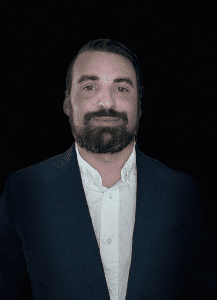
BioHealth Capital Region 2022 Q3 News Recap – Keeping Up the Momentum
A few of BioBuzz’s favorite stories from late summer/early fall
Over the past several months, life sciences companies across the BioHealth Capital Region showcased their innovative capabilities and pipeline development program. BioBuzz takes a look back at five key events that took place in the third quarter.
BioFactura Moves Forward with Stelara Biosimilar
Frederick, Maryland-based BioFactura is beginning to see the fruits of its labors with the development of ustekinumab (BFI-751), its biosimilar for Janssen’s Stelara. In October, the company announced Phase 1 data that showed pharmacokinetic comparability to the comparison drug.
The company also reported there were no marked differences in the safety and tolerability profile for subjects receiving ustekinumab. BioFactura intends to conduct a confirmatory safety and efficacy study in patients to pave the way for global registration.
Dr. Jeffrey N. Hausfeld, Chairman of the Board and Chief Medical Officer of BioFactura, noted that unlike trials assessing novel drugs, a Phase 1 trial for a biosimilar asset is considered a pivotal pharmacokinetic study because it quantifies and compares how a biosimilar drug is absorbed and metabolized in relation to the innovator products.
“The establishment of meeting the primary endpoint of clinical bioequivalence in this trial, along with our fingerprint bioanalytical comparative data, puts BioFactura well on the way to regulatory approval and commercial launch of BFI-751,” Hausfeld said in a statement.
Earlier this month, Biofactura partnered with Rani Therapeutics to pair BFI-751 with Rani’s RaniPill platform technology. The technology platform replaces the need for intravenous or subcutaneous injection of biologics. Instead, Rani’s technology creates a new form of oral medication with a robotic pill.
REGENXBIO Sees Positive Interim Wet AMD Data
Rockville, Maryland-based REGENXBIO revealed interim data from an ongoing Phase 2 clinical trial assessing RGX-314 that showed positive efficacy for the experimental treatment of wet AMD, a leading cause of vision loss.
Interim data from the Phase 2 AAVIATE study evaluating RGX-314 is so far positive and well-tolerated. Across five cohorts, 85 patients have been dosed. Of the serious adverse events reported, none have been related to RGX-314, the company said. The primary endpoint of the trial is mean change in vision in patients dosed with RGX-314, as measured by best corrected visual acuity (BCVA) after 40 weeks, compared to patients receiving monthly injections of Lucentis (ranibizumab).
Based on the positive data seen so far, REGENXBIO and its partner AbbVie remain on track to submit a Biologics License Application to the FDA in 2024.
Beyond Wet AMD, RGX-314 is also being assessed for the treatment of diabetic retinopathy.
Pfizer and Morgan State Partner for New Fellowship Program
Pharma giant Pfizer partnered with Morgan State to support the college’s Doctor of Public Health Fellowship.
In August, two members of the inaugural cohort, Nguhemen Tingir and Monica Ochapa, became Morgan State’s first Vaccines Fellows. For the next two years, the pre-doctoral candidates will dive into the program and the world of vaccines. They will be expected to contribute to and take the lead in medical, clinical, and scientific affairs related to vaccines. The duo will be trained to understand and interpret clinical data and explain a balanced benefit-risk proposition to internal stakeholders.
When Tingir and Ochapa complete their Fellowship program, the duo will have an opportunity to bring their experience and viewpoint into the Pfizer organization.
RELATED: Despite Rocky Biotech Bear Market, the BioHealth Capital Region Holds Fast and Forges Ahead
Vita Therapeutics Raises $31 Million
Baltimore-based Vita secured $31 million in financial support to fund its ongoing development efforts for its lead muscular dystrophy asset. The Series B financing round will support Vita’s ongoing studies of VTA-100, a potential treatment for limb-girdle muscular dystrophy 2A (LGMD2A), a subtype of the disease. LGMD2A is a localized form of the disease that typically impacts the shoulders, upper arms, pelvic area and thighs.
Vita’s approach uses induced pluripotent stem cell (iPSC) technology to engineer specific cell types designed to replace those that are defective in patients. VTA-100 is an autologous treatment that combines gene correction and induced iPSC technology to help repair and replace muscle cells for people with LGMD2A. During the third quarter, Vita initiated studies to support the company’s planned Investigational New Drug Application.
In addition to supporting development of VTA-100, Vita’s Series B also allowed the company to secure a new pipeline asset. The company gained VTA-120, a potential treatment for patients with facioscapulohumeral muscular dystrophy (FSHD). VTA-120 is designed to be an autologous treatment that combines gene correction and iPSC technology to help repair and replace muscle cells for the treatment of FSHD, which like LGMD2A is a localized form of the disease.
ATCC Wins Leishmaniasis Grant
Virginia-based ATCC secured two new contracts from Gennova Biopharmaceuticals Limited related to the development of a vaccine for Leishmaniasis, an infectious disease caused by the bites of certain species of infected sand flies, including Leishmania major and Leishmania donovani.
Using a Leishmania antigen, ATCC was able to turn it into a master cell bank, which will be used in the development of a vaccine candidate for the infectious disease. Prior to sending out the cells for development, ATCC ran the biological material through multiple quality checks and created a working cell bank. Now, Gennova is expected to take the material and initiate studies that could lead to in-human trials of the vaccine candidate.





